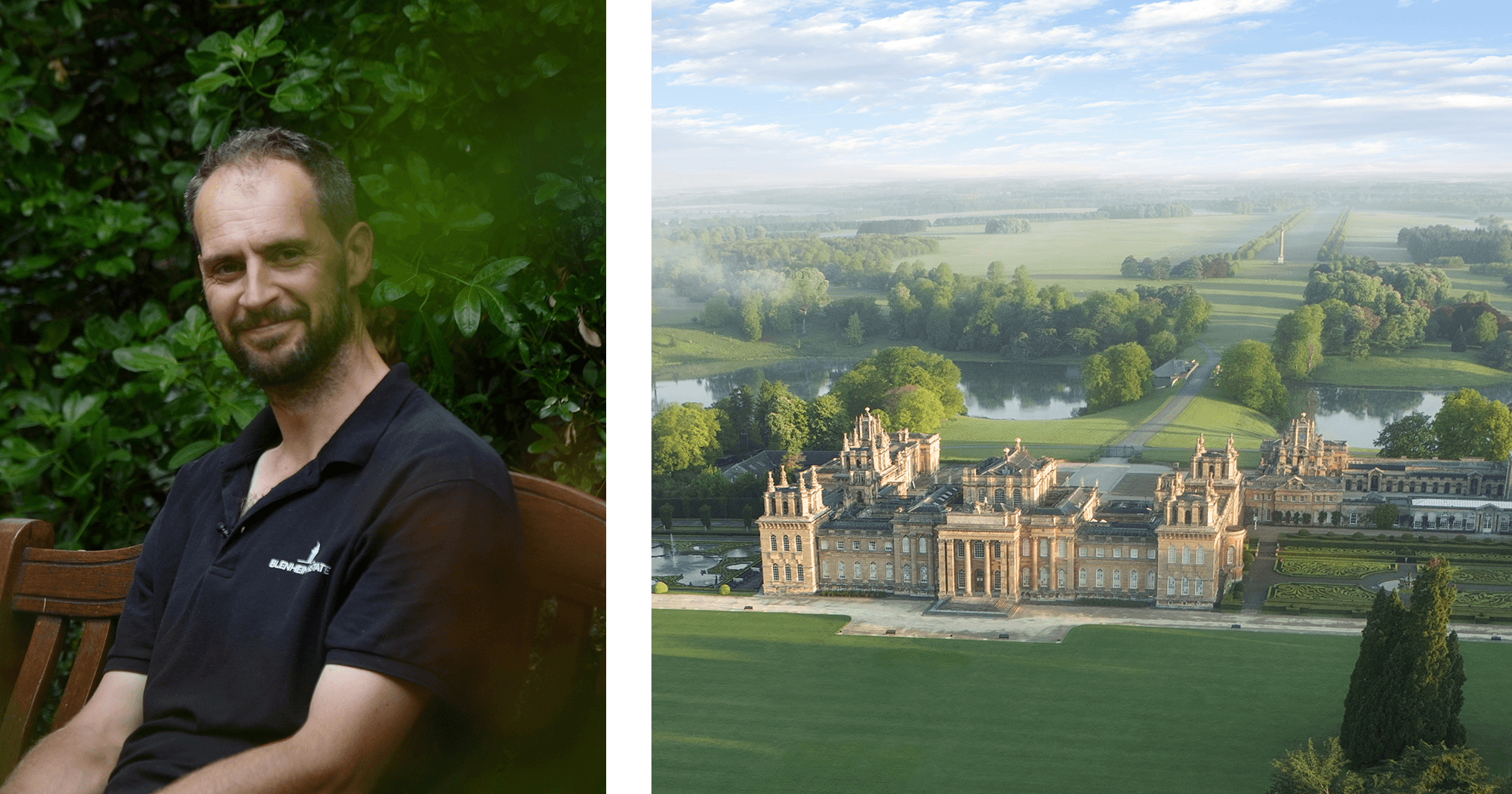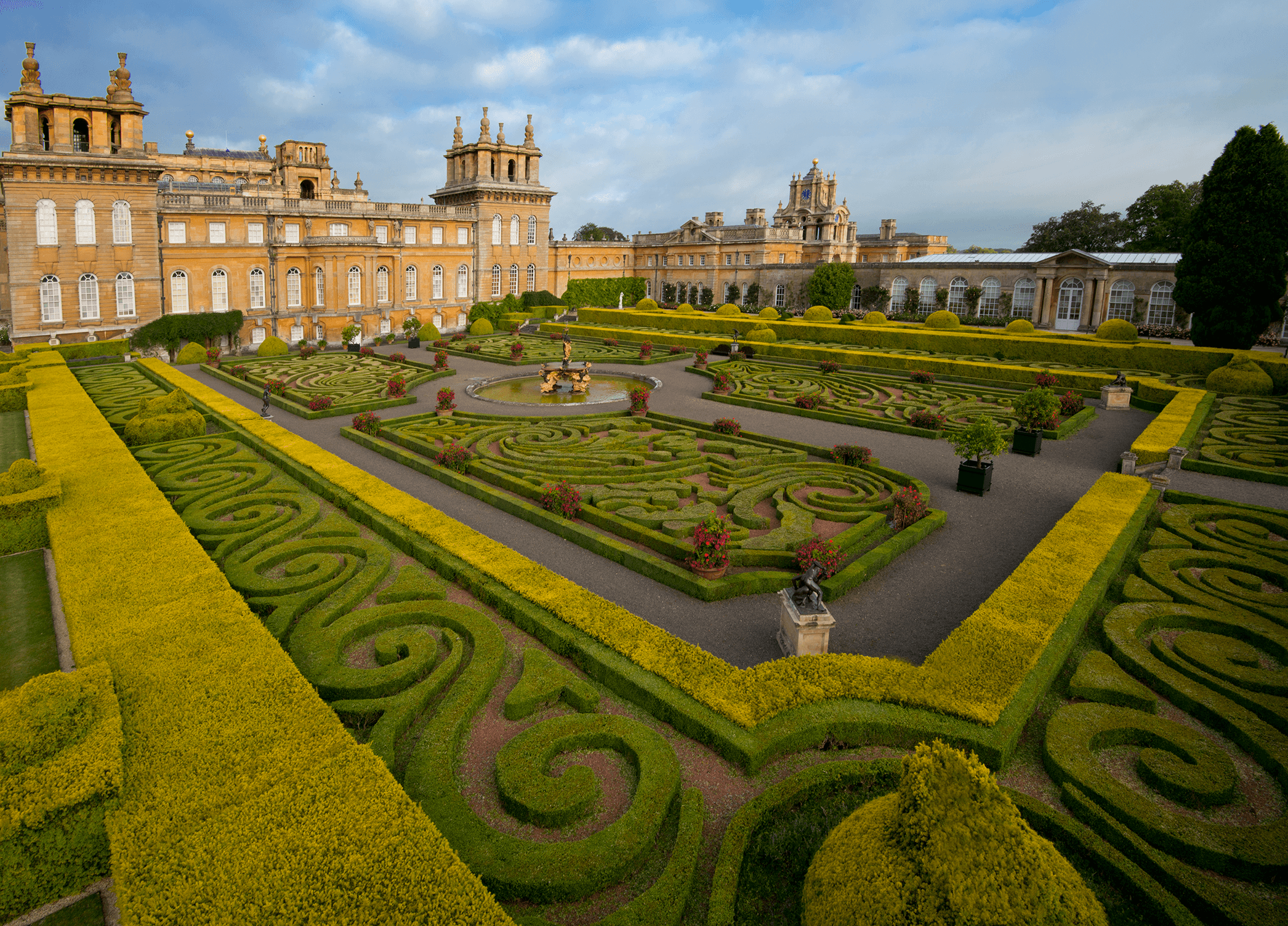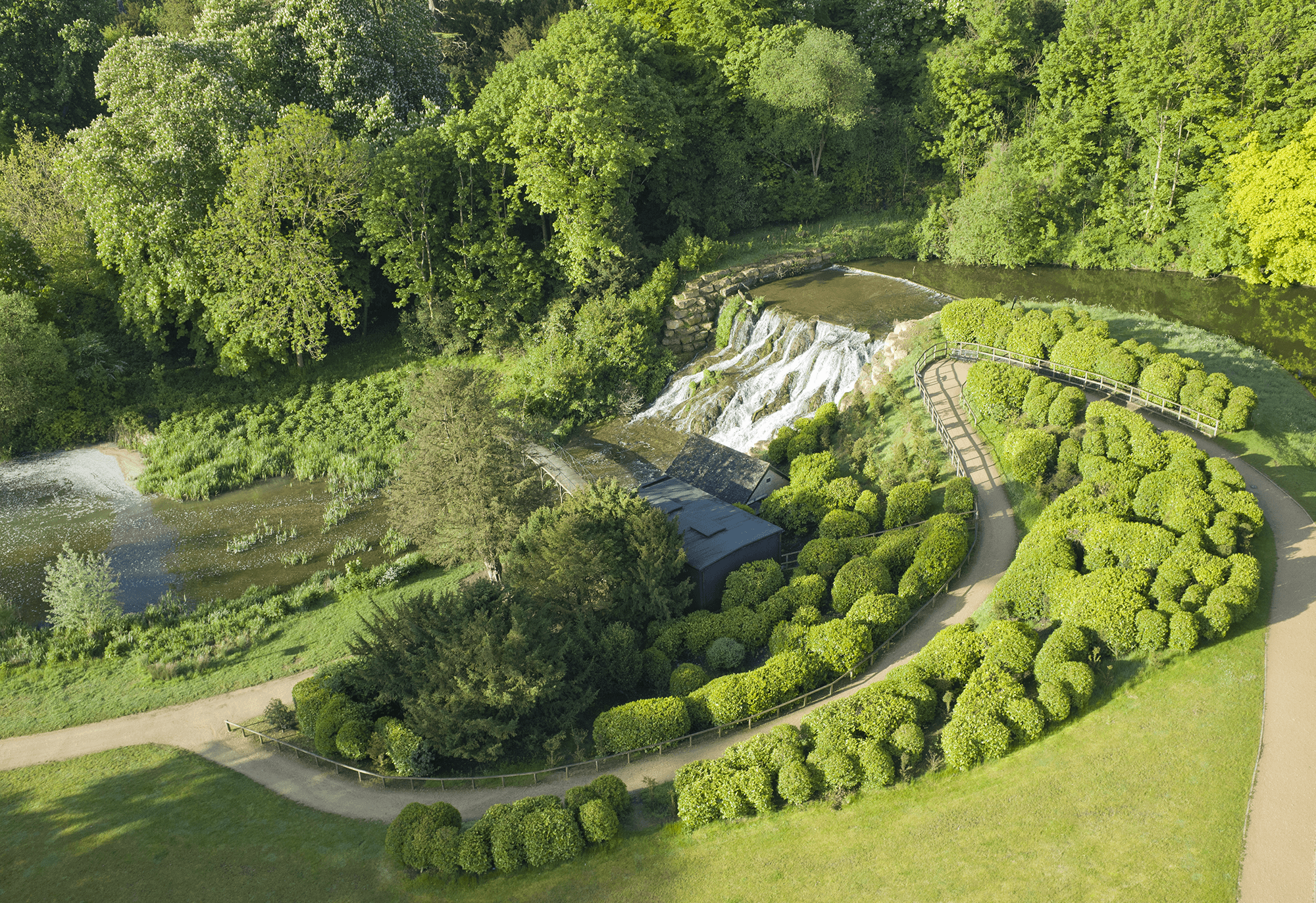Ever wondered what it takes to keep a historic home's garden looking tip-top? Today, we're digging into the exciting work of Blenheim Palace’s Head Gardener—Andy Mills. The UNESCO World Heritage site boasts 90 acres of formal gardens that are embedded with history, much like the palace itself. Parts of these gardens have been buried for centuries, and Andy has been working to bring these features back to life. He’s kindly answered our questions about his career in gardening.

Left: Andy Mills, Head Gardener of Blenheim Palace. Right: Aerial view of Blenheim Palace and gardens. Images courtesy of Blenheim Palace.
What kind of work do you do day-to-day?
My wife says “I spend my days outside in all weathers having fun”—which is pretty accurate—I am fortunate that I am paid to work in a beautiful environment doing a job that many people do for relaxation.
How does someone become a head gardener for a historical site? Do you need special training?
I spent a number of years working for the National Trust, firstly as an apprentice gardener (many years ago) and moving between gardens each time moving up the ladder—there is no substitute for experience as a gardener or any shortage of things to learn.
 The Italian Gardens at Blenheim Palace. Image courtesy of Blenheim Palace.
The Italian Gardens at Blenheim Palace. Image courtesy of Blenheim Palace.
How did you first become interested in gardening? Was there a moment or experience that you remember?
My Mum often recounts a story of me sitting in the back garden at a very young age popping stones in my mouth and swirling them around until they were “clean” and then spitting them out—perhaps my gardening began then?
Part of your job is to bring back parts of the gardens that were lost over time. How do you know what the garden used to look like?
We have some fabulous records and images of how the gardens have evolved and changed over the years which are extremely helpful.
However, there is also no substitute for experience and the ability to read the gardens and to feel what an area could and should look like.
What is your favorite part of your job? What is the most challenging part?

The Grand Cascade and Swiss Bridge in Blenheim Palace gardens. Image courtesy of Blenheim Palace.
Have you ever uncovered something surprising in Blenheim Palace’s gardens?
So many surprises such as the “Cascade Gardens” and the “Rockery” I am sure that there are many more to discover.
Are there any specific plants or features in the gardens that you'd like more visitors to know about?
The Cascade Garden is a feature which I am very keen to develop and put back on the garden map. The plant collection here is fabulous with some absolute monster Cedar trees.
Do you have any advice to give kids who might be interested in a career in gardening?
Perhaps help your parents or grandparents in their gardens or allotments, get your hands in the soil.
My Gran used to say, “clean enough to be healthy and dirty enough to be happy”.
If you do not have access to a garden, see if there are any volunteering opportunities for young people in your area or maybe you have a growing space at school.

The Temple of Diana, located near the Water Terraces. Image courtesy of Blenheim Palace.
Want to learn more about Blenheim Palace? Don’t forgot to check out our interview about built heritage and interview with an archivist. And if you’re looking for more careers to explore, you can browse our kids magazine. Learn what it’s like to be an astronaut, postal worker, Olympian, archaeologist, and more.
